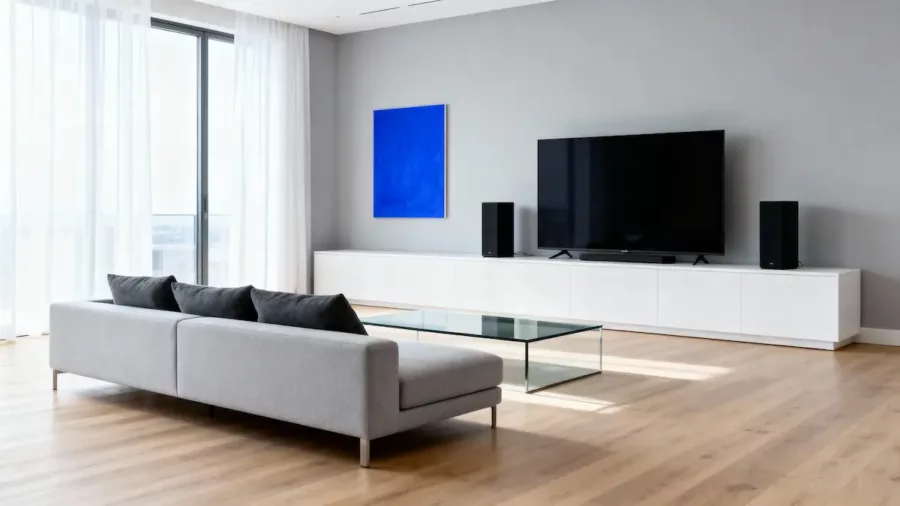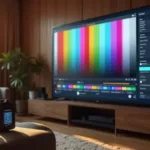
Top 3 types of smart home devices to upgrade your space
Perfect your living space with the top 3 smart home devices that promise convenience, security, and energy savings—discover which upgrades truly transform your home.

Choosing between QLED and OLED TVs goes beyond brand names, it’s about the technology that shapes your viewing experience. Each offers unique strengths in brightness, contrast, and color, affecting how shows, movies, and games appear in different lighting. But which one is truly the best fit for your room and viewing habits? Understanding the key differences between QLED and OLED will help you make an informed choice and get the most stunning picture quality possible.

QLED technology takes traditional LED backlighting to the next level by adding a special layer of quantum dots. These tiny particles glow with precise colors when the LED backlight shines on them, making the colors on your screen more accurate and brighter.
Thanks to QLED technology, displays show richer color volume and better luminance, giving you vivid and lifelike images. If you want a TV that stays bright and colorful even in well-lit rooms, QLED technology is a great choice.
OLED technology uses millions of tiny organic compounds that light up individually when an electric current flows through them. This means each pixel in an OLED display produces its own light, so there’s no need for a bulky backlight.
Thanks to this self-emissive feature, OLED technology delivers amazing brightness and contrast control right at the pixel level. That’s why OLED technology is perfect for creating thinner, more flexible screens without losing any image quality.
If you’re curious about the latest in display tech, OLED technology is definitely a game-changer!
When comparing QLED vs OLED TVs, brightness and color accuracy play a big role in picture quality.
QLED TVs usually offer higher peak brightness, which makes them great for bright rooms.
On the other hand, OLED TVs shine in color accuracy thanks to their self-emissive pixels that create vivid and precise colors without any backlight interference.
If you’re deciding between QLED vs OLED, both deliver stunning visuals, but each technology has its own strengths in brightness and color fidelity.
Understanding these differences can help you pick the perfect TV for your tech setup.
Black levels and contrast are key factors that shape your viewing experience when choosing between QLED and OLED TVs.
OLED TVs shine because their panels can turn off individual pixels completely, producing true black levels and infinite contrast.
On the other hand, QLED TVs use LED backlights which can cause light bleed, making it hard to achieve perfect black levels and resulting in lower contrast.
If you want deeper blacks and more vivid contrast, OLED TVs generally deliver better performance compared to QLED TVs.
Understanding black levels and contrast can help you pick the right TV for the best picture quality.
Viewing angles and screen uniformity are key factors that affect how viewers enjoy picture quality from different spots in the room.
OLED TVs shine when it comes to viewing angles, offering wide and consistent colors and brightness that keep the image looking great even off-center.
On the other hand, QLED TVs, while known for their brightness, can experience color shifting and lower contrast when seen from sharp angles.
When it comes to screen uniformity, OLED leads the way by delivering even brightness across the entire panel without any clouding or tinting.
If you want the best viewing angles and screen uniformity for your TV setup, OLED is often the top choice for a vibrant and consistent picture.
When choosing between OLED and QLED TVs, durability and lifespan are important factors to consider.
OLED TVs are known for their amazing picture quality and wide viewing angles, but their durability can be a concern. OLED panels may face issues like burn-in and a gradual decrease in brightness over time, which can affect the TV’s lifespan.
On the other hand, QLED TVs use inorganic materials that make them more durable and resistant to image retention. This means QLED TVs generally offer a longer lifespan and better durability for everyday use.
When comparing OLED TVs and QLED TVs, price and value for money are key factors to consider.
OLED TVs usually come with a higher price tag because of their advanced display technology and amazing picture quality. On the other hand, QLED TVs often offer more affordable prices and a wider selection, making QLED a great choice for budget-conscious buyers.
If you want the best value for money without sacrificing much in performance, QLED TVs are worth checking out.
However, OLED TVs attract those who prioritize stunning visuals and deeper contrast, justifying their premium cost.
Whether you choose OLED or QLED, understanding the price and value for money helps you make the best tech decision.
Choosing between QLED and OLED TVs can be tricky, but it really depends on your viewing habits and room setup. QLED TVs are perfect for bright rooms because they offer higher brightness and vibrant colors that really pop. On the other hand, OLED TVs shine in dark environments with their amazing black levels and excellent contrast. When it comes to durability and cost, QLED TVs usually have the edge, while OLED TVs deliver outstanding picture quality and wider viewing angles. So, if you’re deciding between QLED and OLED, think about whether you want brighter screens or deeper contrast and color accuracy. This will help you pick the best TV that fits your tech needs perfectly.

Perfect your living space with the top 3 smart home devices that promise convenience, security, and energy savings—discover which upgrades truly transform your home.

Step into stunning visuals and immersive sound with these top 3 TVs—discover which model transforms your space into the ultimate home theater experience.

Discover three top TVs that dramatically elevate your home theater experience—delivering stunning visuals and features you won’t want to miss.

Step into the world of perfect visuals by learning how to calibrate your TV—discover secrets that make every scene stunning and true to life.

Start optimizing your TV’s sound with simple calibration tips that unlock richer audio—discover how to transform your listening experience today.

Merging affordability with impressive performance, these top 3 budget TVs defy expectations—discover which models deliver quality without breaking the bank.